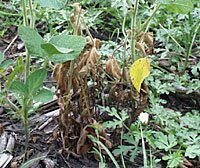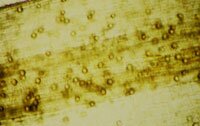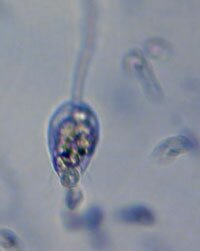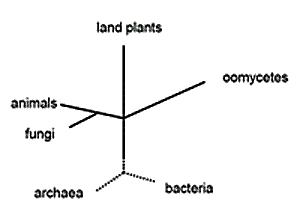
-
Soybean Diseases
- Asian Rust
- Anthracnose
- Bacterial Blight
- Bacterial Pustule
- Bean Pod Mottle Virus
- Brown Stem Rot
- Cercospora Leaf Blight
- Charcoal Rot
- Downy Mildew
- Frogeye Leaf Spot
- Green Stem Syndrome
- Iron Deficiency Chlorosis
- Phytophthora Root & Stem Rot
- Powdery Mildew
- Rhizoctonia
- Seedling Diseases
- Septoria (Brown Spot)
- SCN (Soybean Cyst Nematode)
- Soybean Mosaic Virus
- Stem Canker
- Sudden Death Syndrome
- Viruses
- White Mold
- Soybean Pests
- Diagnostic Help
- Field Trials
- Soybean Library
| Disease: Phytophthora Root & Stem Rot |
Your Soybean Checkoff.
Delivering Results.
Illinois
Indiana
Iowa
Kansas
Michigan
Minnesota
Missouri
Nebraska
North Dakota
Ohio
South Dakota
Wisconsin
Phytophthora Root and Stem Rot
| View these Powerpoint slide presentations about Phytophthora: |
|
Phytophthora Biology |
Phytophthora sojae is one of the most destructive soybean pathogens in the north-central region, and a major cause of stand establishment problems. Seeds and seedlings can be infected and killed at any time after the seed has absorbed moisture.
The fungus also infects plants later in the season following periods of heavy rain, causing stem rots or chronic root rot.

|
| Stem rot caused by Phytophthora sojae. Click on image to view a larger version. Photo credit: Anne Dorrance, Ohio State University |
Phytophthora disease develops quickly in warm, saturated soils
Phytophthora sojae belongs to a group of organisms called oomycetes, also known as “water molds”, that include some of the most devastating plant pathogens, including Pythium, late blight, Aphanomyces of peas and downy mildews.
Warm soil and periodic rains at weekly intervals are ideal conditions for Phytophthora diseases. Optimum conditions for infection are warm soils at a temperature greater than 60°F, and soils that are flooded or saturated.
Phytopthora diseases are most common in fields or parts of fields with poor drainage. But they can also occur in well-drained fields when the pathogen is present and the soils are saturated for 7 to 14 days due to heavy rain or irrigation.
 |
| Oospores in soybean tissue Photo credit: Anne Dorrance, OSU. |
 |
| Zoospores being released from the tip of a sporangium during saturated soil conditions. Photo credit: Anne Dorrance, OSU |
A disease cycle adapted to wet, saturated soils
Phytophthora sojae has a disease cycle unique to fungi that are adapted to saturated soils. Phytophthora survives in soil as spores called oospores which are produced in infected plants. The oospores can survive for many years in soil after plant residues decompose.
Oospores germinate when there is high soil moisture, forming sporangia. Sporangia germinate directly and infect the root, or they can produce zoospores.
Zoospores are tiny, motile spores that are released when soils are flooded or saturated. The motile spores are attracted to seeds and roots by genistein and other isoflavanoid exudates released by soybean roots.
The water mold group includes some of the most devastating plant pathogens
The oomycetes, also known as “water molds”, are a group of several hundred organisms that include some of the most devastating plant pathogens. The diseases they cause include Phytophthora and Pythium seedling blights and damping-off, root rots, foliar blights such as late blight, and downy mildews.
Because of their filamentous growth habit, nutrition by absorption, and reproduction via spores, oomycetes were long regarded by plant pathologists as lower fungi. However, as our understanding of evolutionary relationships has grown, it is now clear that this group of organisms is unrelated to the true fungi.
 |
|
Phytophthora, as an oomycete, used to be considered a fungus. It is now thought that fungi are more closely related to animals than to oomycetes, and oomycetes are more closely related to algae and to green plants. From: Fry, William E. and Niklaus J. Grünwald. 2010. Introduction to Oomycetes. The Plant Health Instructor.. |
